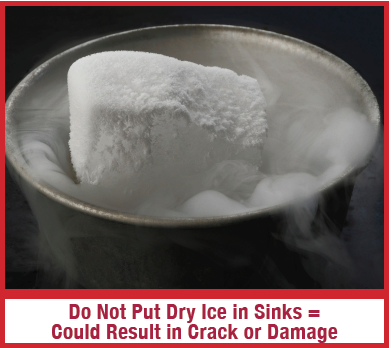Dry ice is the solid form of carbon dioxide. It is used in research as a cooling agent. Dry ice is considered a hazard because it presents the following types of health hazards:
- Skin contact hazard – Skin can be damaged by the extreme cold temperatures of the ice pellets or blocks. Frostbite can occur when in contact with skin.
- Inhalation (Suffocation) hazard – Dry ice releases carbon dioxide gas. In an area with poor ventilation, this can create an oxygen-deficient atmosphere.
- Explosion hazard – If dry ice is enclosed inside of a sealed container or confined space, it can release gas in volumes large enough to cause a violent release. This can result in personal injury or property damage.
To handle dry ice safely:
- Store in a well-ventilated location. Avoid storing in cold rooms or storage closets unless there is adequate ventilation supplied to the area.
- Do not place dry ice inside of containers that do not vent.
- Never handle dry ice with bare hands. Reduce the risk of injury by wearing cryogloves.
- Always dispose of dry ice properly. Let the remaining portion sublimate in a well ventilated area.
- Never dispose of dry ice in a sink, toilet, or other confined space. This can cause structural damage and costly repairs. In one research building, the cost was between $300-$400 to repair.


Leave a Reply